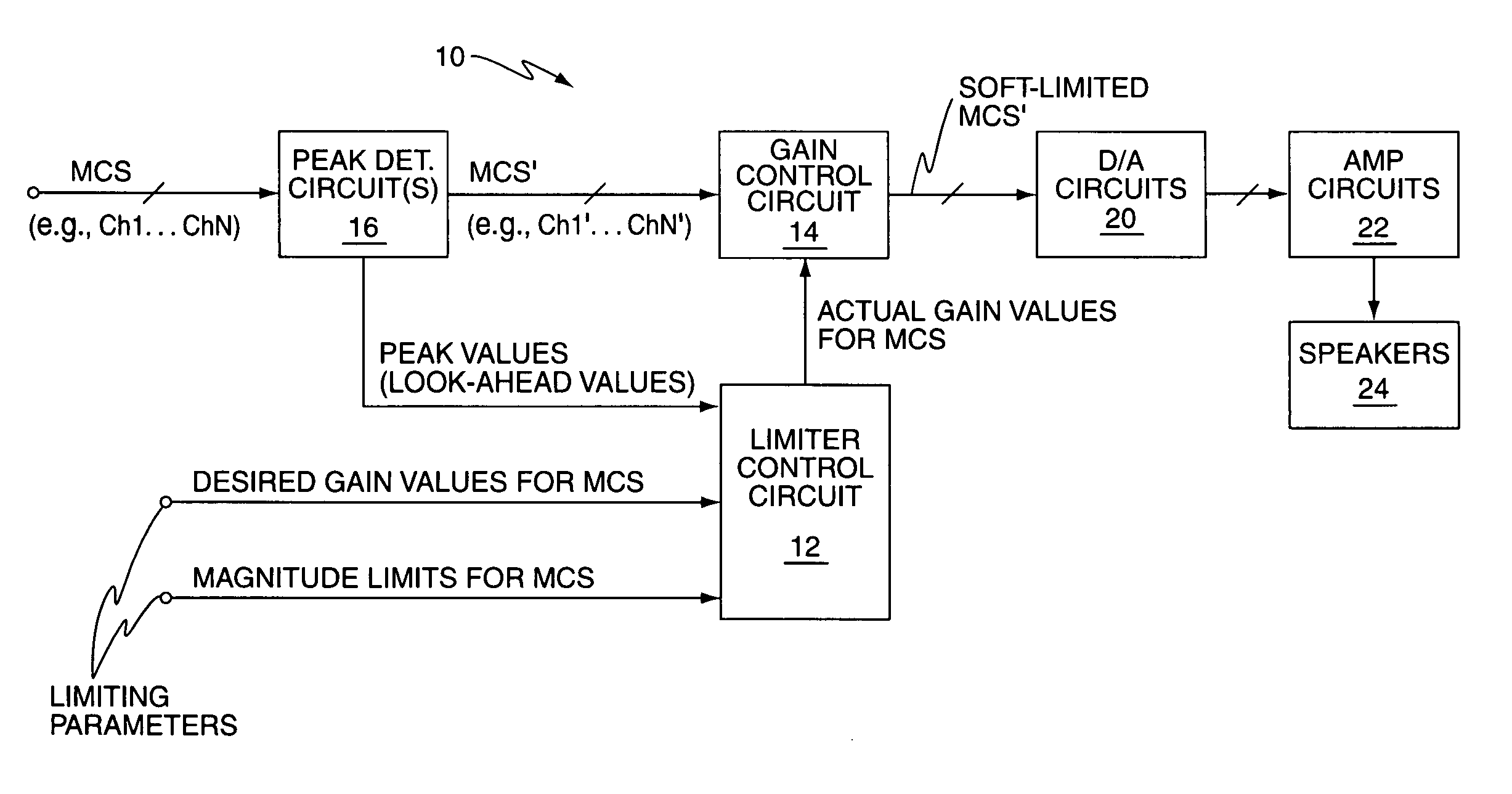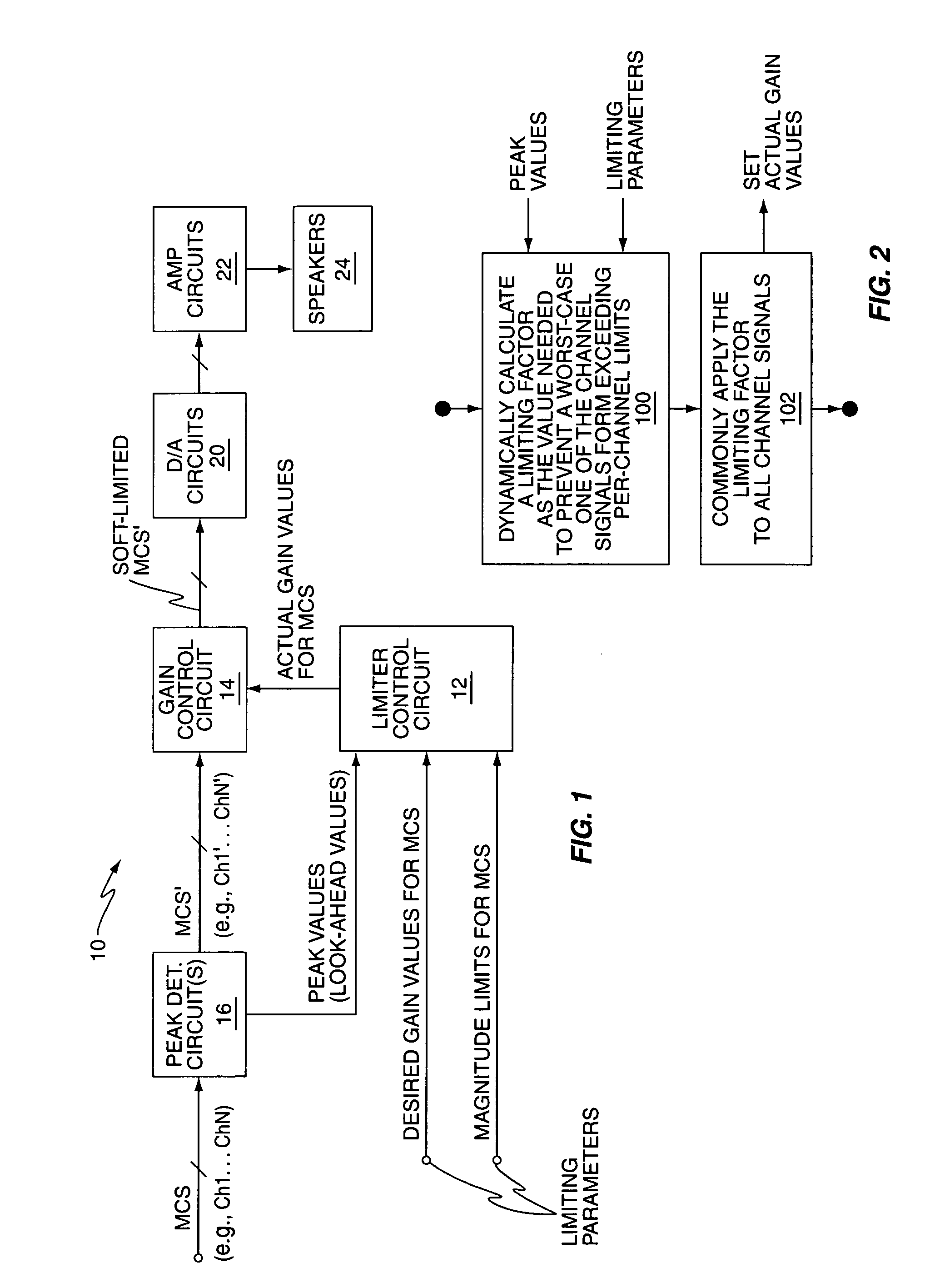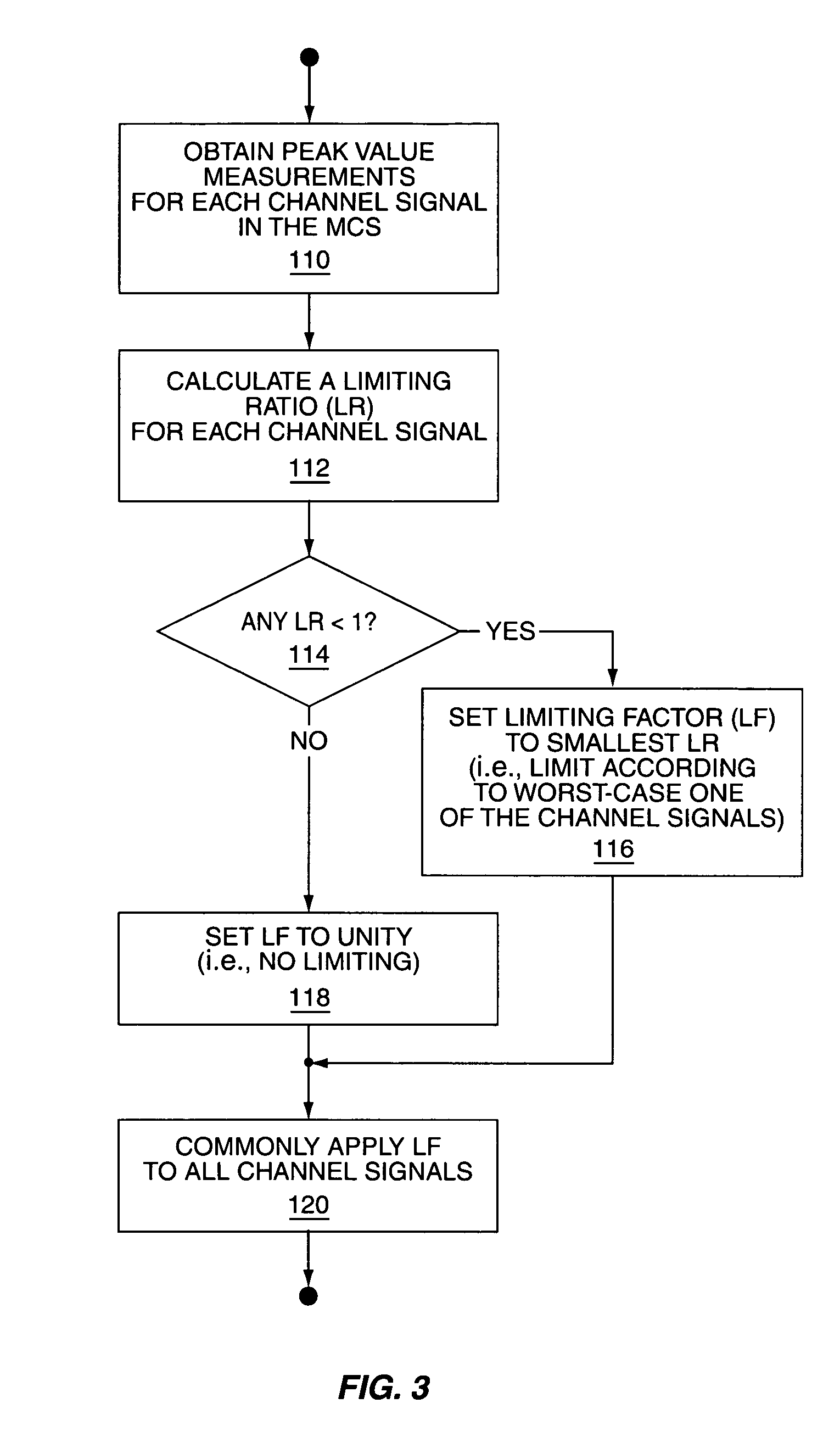Method and apparatus for multichannel signal limiting
a multi-channel, signal-limiting technology, applied in the direction of amplifier combinations, volume compression/expansion, instruments, etc., can solve the problems of reducing the signal information, changing the waveform shape, and inherently hard-limiting, so as to prevent clipping and prevent clipping
- Summary
- Abstract
- Description
- Claims
- Application Information
AI Technical Summary
Benefits of technology
Problems solved by technology
Method used
Image
Examples
Embodiment Construction
[0022]FIG. 1 functionally illustrates one embodiment of a multichannel limiter 10 that provides limiting control for multichannel signals, such as a multichannel audio signal comprising left and right channel signals, for example. In particular, the limiter 10 is configured to set a “limiting factor” dynamically to whatever value is needed to prevent any channel signal included in the multichannel signal from exceeding defined magnitude limits and commonly applying that limiting factor to all channel signals. In other words, the limiter 10 coordinates the gain reduction of all channel signals making up the multichannel signal to prevent any channel signal from clipping, while simultaneously preserving the relative gain and amplitude relationships among the channel signals.
[0023]The limiter 10 performs multichannel signal limiting based on the application of a common limiting factor even where the limiter parameters, e.g., the maximum magnitude limit, the desired channel gain, and th...
PUM
 Login to View More
Login to View More Abstract
Description
Claims
Application Information
 Login to View More
Login to View More - R&D
- Intellectual Property
- Life Sciences
- Materials
- Tech Scout
- Unparalleled Data Quality
- Higher Quality Content
- 60% Fewer Hallucinations
Browse by: Latest US Patents, China's latest patents, Technical Efficacy Thesaurus, Application Domain, Technology Topic, Popular Technical Reports.
© 2025 PatSnap. All rights reserved.Legal|Privacy policy|Modern Slavery Act Transparency Statement|Sitemap|About US| Contact US: help@patsnap.com



